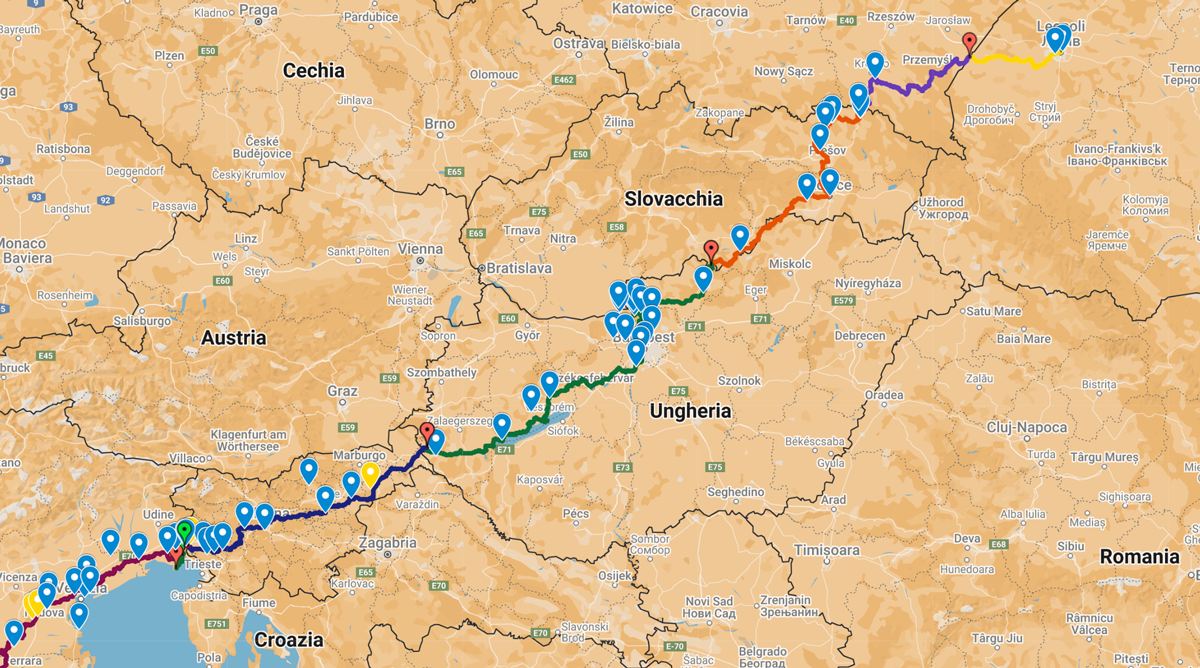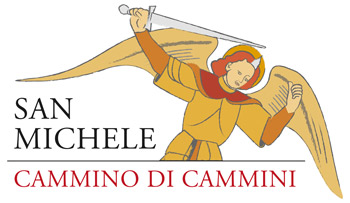Poland - Hungary - Slovakia - Slovenia

Cultural and Linguistic Warnings
Unless otherwise specified, the churches mentioned are all to be understood as affiliated with the Latin Rite Roman Catholic Church. Only beyond the Danube (coming from the West), beyond Mount St. Michael on the Danube Bend, heading toward Ukraine, can one encounter Catholic churches of the Greek Byzantine Rite (in which case the affiliation will be specified), as well as Lutheran churches.
Notes on the Pronunciation of Hungarian Place Names
Ny = like Ñ in Spanish
Gy = like the “du” sound in the English word “duke”
S = like “sc” in the Italian word “Scienza”
Ly = like “gl” in the Italian word “Gli”
Zs = like “g” in the Italian word “giornata”
N.B. = Unaccented vowels are short, while accented vowels are long (in Hungarian, the tonic accent always falls on the first syllable).
For centuries, the Carpathian Basin, Pannonia, and the lands of the Crown of the Apostolic Kingdom of Hungary were connected to Italy by an important road artery called the “Via Postumia” or “Via Pannonica,” which led from the plains of Northern Italy to Lake Balaton (which, until 1000, was under the Diocese of Aquileia) and from there to Northern historical Hungary, now corresponding to the present-day Slovak Republic, a region rich in natural resources (timber and minerals, including gold). For millennia, peoples, cultures, religions, and goods have passed through this route. It is in the spirit of this “artery of Europe” that this walking route proposal has been conceived, with the intention of providing today’s traveler or pilgrim with an itinerary that, through the main locations related to the cult of St. Michael in this part of Europe, leads to the St. Michael Sanctuary in Miejsce Piastowe (Poland).
Key points of this proposed St. Michael pilgrimage route are:
1. Mount St. Michael at Balaton (Hungary)
2. The Cathedral of St. Michael in Veszprém (center of Christian spread in historical Hungary, seat of the oldest bishopric of the Apostolic Kingdom of Hungary)
3. Mount St. Michael in Börzsöny (Hungary)
4. The St. Michael Sanctuary in Miejsce Piastowe (Poland)
5. The St. Michael churches (mostly wooden) of the historic region of Šariš/Sáros/Scharosch (Slovakia).
To connect these five main St. Michael points across Hungary, Slovakia, and Poland, it was sufficient to follow the “geography” of the St. Michael cult in this part of Europe, which led us from Börzsöny to the Church of St. Michael in Tar, in the UNESCO Novohrad-Nograd Geopark, rich in historical testimonies and sites of great natural and geological interest, and – through the Church of St. Michael in Chrámec, in the historical region of Gömör, famous for its karst caves and castles – to the Church of St. Michael in Jasov and the chapel of St. Michael in Košice.
In Šariš, the route touches the St. Michael churches in Šarišské Michaľany (Szentmihályfalva), Bardejov (Bártfa/Bartfeld), Ladomirová (Ладомирова/ Ladomérvágása), and Nižná Pisaná, passing through Svidník (near the wooden St. Michael churches of Šemetkovce and Príkra), where one can admire one of the most interesting icons of the Archangel Michael at the local museum.
The path also passes through places where the memory of the tragedy of war is still vivid (around the Dukla Pass, between Slovakia and Poland, the site of bloody battles during World War I and II). A journey through what has historically been and still is the “heart of Europe,” with the hope that through encounters between different peoples, cultures, and religions, a vision of Europe based on mutual respect, dialogue, pluralism, and thus peace will emerge.
As shown, the idea of the Pannonian-Polish St. Michael Pilgrimage offers important access to a significant portion of European cultural and religious heritage.
At present, the project will focus on defining a structured walking route proposal (“long-distance trail” in English, the “lingua franca” of the tourism sector) that can be walked along existing or deemed “feasible” paths, connecting the network of trails already created for pilgrims traveling on foot, by bike, and perhaps even on horseback. At present, the commitment of those working as volunteers on the project is entirely focused on the section from the Italy-Slovenia border to Miejsce Piastowe, passing through Mount St. Michael at Balaton, Mount St. Michael in Börzsöny, Veszprém, and the “St. Michael district” of the historical region of Sáros.
The invitation to all lovers of pilgrimage and outdoor tourism is to help concretely define this walking path through Slovenia, Hungary, and Eastern Slovakia.

